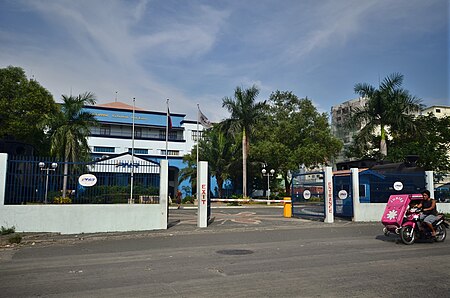Tutuban station
Buildings and structures in Tondo, ManilaPhilippine National Railways stationsRailway stations in Metro ManilaRailway stations opened in 1892Spanish colonial infrastructure in the Philippines ... and 2 more
Use Philippine English from January 2023Use mdy dates from January 2023

Tutuban station (also known as Manila station or Divisoria station) is the central railway terminus of the Philippine National Railways (PNR) network located in the city of Manila, Philippines. The name refers to two stations: the original Tutuban station, which today forms part of Tutuban Center, and the PNR Executive Building, which houses PNR offices.
Excerpt from the Wikipedia article Tutuban station (License: CC BY-SA 3.0, Authors, Images).Tutuban station
Dagupan Street, Manila Tondo
Geographical coordinates (GPS) Address Website Nearby Places Show on map
Geographical coordinates (GPS)
| Latitude | Longitude |
|---|---|
| N 14.6114 ° | E 120.9732 ° |
Address
Philippine National Railways Executive Building
Dagupan Street
1012 Manila, Tondo
Philippines
Open on Google Maps






